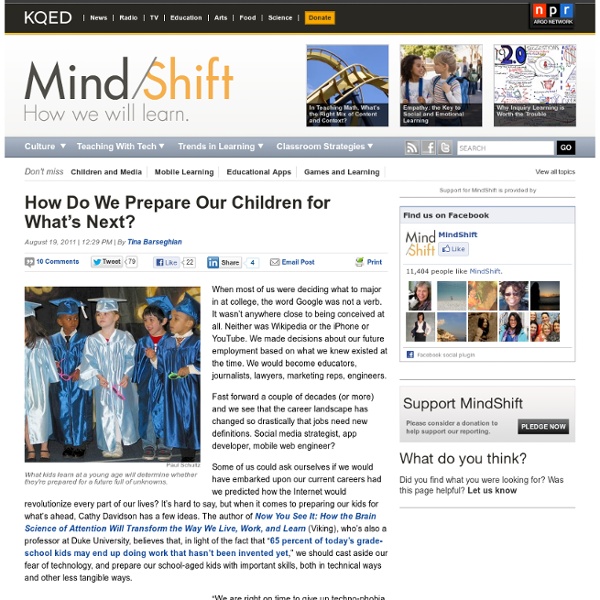How Do We Prepare Our Children for What’s Next?

ShowMe - The Online Learning Community
PBL – the best teaching method in the 21st century instruction
Let me start this article with what Obama says in a speech at the Center for American Progress : “ Let’s be clear — we are failing too many of our children. We’re sending them out into a 21st century economy by sending them through the doors of 20th century schools.” This is a true statement issued from the lips of a political person rather than an educator. There is a profound disconnect between what students are being taught and what the actual world is demanding of them as adults. There is a huge need for a total reformation of school systems and curriculums to better fit in the 21st century education. Today, however, I am introducing you to a teaching ,or better say, instructional method that is called Project Based Learning. Project Based Learning or PBL in short is “ an instructional approach built upon authentic learning activities that engage student interest and motivation. Projects and activities are the keys to a better understanding of PBL. Some features of PBL
Featured Project Detail : Adobe Youth Voices .: AnimAction, Inc - Awareness Through Animation ™ :.
In June 2006, Adobe launched a new global philanthropic program, Adobe Youth Voices. The program engages 12-18 year-olds with digital tools to develop critical skills necessary to become active and engaged members of their communities. Through documentary filmmaking, animation, digital images, audio and web projects, these youth are encouraged to "create with purpose" and have a voice in changing their communities. For full details on the program, please see the Adobe press release that announced the program and the program's Web site. AnimAction was invited to collaborate as an animation training partner with Adobe Youth Voices partners iEARN, the world's largest non-profit global network of K-12 educators and youth using technology to design and collaborate on projects that make a difference in the world, and Listen Up! AnimAction trained 60 youth and teachers in animation at the Adobe Youth Voices, Christel House India Learning Centre based in Bangalore.
inquiryhub
Flipped learning: A response to five common criticisms
One of the reasons this debate exists is because there is no true definition of what “flipped learning” is. Over the past few years, the Flipped Learning method has created quite a stir. Some argue that this teaching method will completely transform education, while others say it is simply an opportunity for boring lectures to be viewed in new locations. While the debate goes on, the concept of Flipped Learning is not entirely new. Dr. Eric Mazur of Harvard University has been researching this type of learning since the early ’90s, and other educators have been applying pieces of the Flipped Learning method for even longer. It’s our opinion that one of the reasons this debate exists is because there is no true definition of what Flipped Learning is. Dr.
Flipped Classroom
How flipping works for you Save time; stop repeating yourself Record re-usable video lessons, so you don't have to do it again next year. It's easy to make minor updates to perfect lessons over time once the initial recording is done. Let students take control of their learning Not all students learn at the same pace. Spend more time with students Build stronger student-teacher relationships, and promote higher level thinking. Other teachers are doing it, you can too Stacey Roshan found that the traditional classroom model wasn't cutting it for her AP students, so she flipped her class. Watch Stacey's Story Crystal Kirch started using videos as instructional tools in her class but soon realized the real value of flipping lectures was being able to spend more face-to-face time with students. Read Crystal's Story Tools You Can Use
Five Best Practices for the Flipped Classroom
Ok, I'll be honest. I get very nervous when I hear education reformists and politicians tout how "incredible" the flipped-classroom model, or how it will "solve" many of the problems of education. It doesn't solve anything. It is a great first step in reframing the role of the teacher in the classroom. It fosters the "guide on the side" mentality and role, rather than that of the "sage of the stage." It helps move a classroom culture towards student construction of knowledge rather than the teacher having to tell the knowledge to students. It also creates the opportunity for differentiated roles to meet the needs of students through a variety of instructional activities. 1) Need to Know How are you creating a need to know the content that is recorded? 2) Engaging Models One of the best way to create the "need to know" is to use a pedagogical model that demands this. 3) Technology What technology do you have to support the flipped classroom? 4) Reflection 5) Time and Place
Related:
Related:



